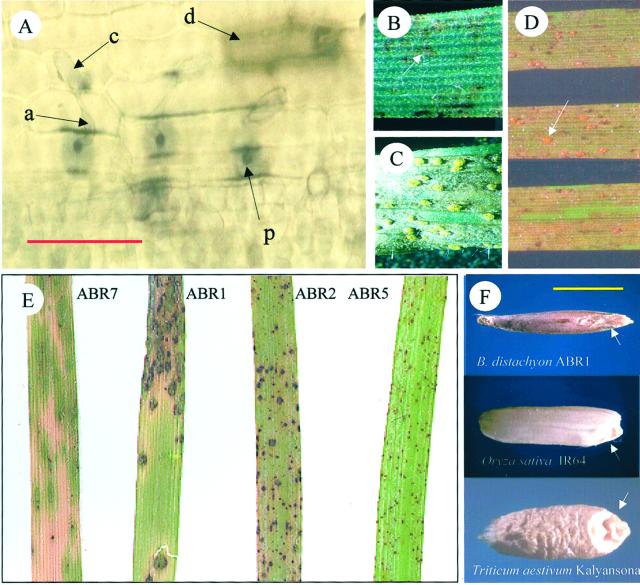Figure 5.
Targets for B. distachyon research. Responses to pathogen challenge and grain development. A, The responses of ABR1 to challenge with condiophores of Blumeria graminis f. sp. Triticae. Bar = 0.1 mm. Arrowed are the condiophore (c), appressorial germtube (a) and papillae formation (p) and single cell-death (d) in the host cell. Challenging with Puccinia striformis f. sp. triticae (wheat yellow stripe rust) elicits (B) localized necrotic flecking on ABR105 and (C) yellow uridea (pustule) formation on ABR100 that develop from (D) extensive areas of necrotic tissue. (Uridea forming within the necrotic tissue are arrowed.) E, Variable responses by B. distachyon ecotypes to challenge with M. grisea Guy-11. F, Comparison of mature seed size and morphology of B. distachyon ABR1 with rice and wheat cv Kalyansona). Embryos are arrowed on each seed. Bar = 2 mm.

